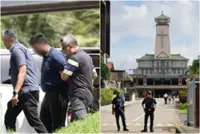Major injuries from machinery accidents due to a lack of machine guarding or not using suitable tools could be avoided, said Senior Minister of State for Transport Amy Khor. - ST PHOTO: CHONG JUN LIANG
SINGAPORE: There were 69 cases of workplace injuries in bus and rail operations in the first nine months of 2023, up 15 per cent from 60 such cases in the same period last year.
Sharing these figures at a rail safety symposium organised by SBS Transit on Nov 24, Senior Minister of State for Transport Dr Amy Khor said the increase is a concern as many of the incidents were preventable.





